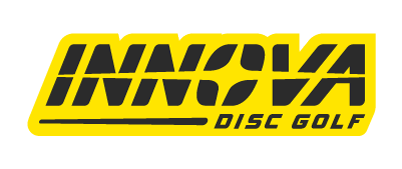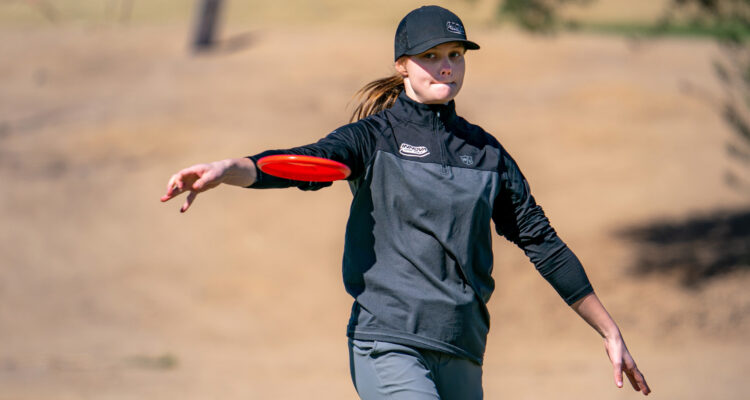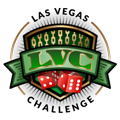“Master Your Approach Game” Features:
Assessing Your Lie
Having a Routine
Shortening Your Reachback
Learning the Wind
Controlling Distance with Nose Angle
Accounting for Ground Play
Playing the Percentages
Practicing Your Putting
Most disc golfers don’t give their approach shots the practice they require. Players go out to the field to learn their drivers. They film themselves to tweak even the smallest aspects of their form. They grind on the putting green, repeating hundreds of putts from the circle’s edge. But when they get out onto the course, the seemingly routine, 150-foot upshots get in the way of an otherwise great round. Though it may not be as fun as unleashing drives, and may not make as satisfying a sound as sinking putts, practicing upshots is every bit as important as practicing the other aspects of your game.
Assess Each Lie as if You are on the Tee Pad of a New Hole
If your tee shot lands out of position, reassess and play for bogie if the percentages say to play for bogie. Smart golf wins tournaments. Each time you step up to a lie, ask yourself what you would throw if that was the tee pad for a new hole. If you wouldn’t try to park that new hole, don’t try to park the upshot. Players who are too set on trying to save par are likely to make mistakes that turn easy bogies into doubles or triples. Each shot on the course is worth the same; once you have made a mistake off the tee, take your medicine, minimize the damage, and move onto the next hole.
View this post on Instagram
Have a Routine
You should have a consistent routine for every shot you throw. First, assess your lie. Move any objects in your stance. Feel and adjust for the wind. Pick your line. How long will your chosen route play? Line up your shot. Pick an aim point in the sky where you want to release the disc; often this aim point is not the basket. Get your shoulders and feet in line with your aim point. If you want a short run-up, practice the footing to make sure your plant foot lands behind your disc. Take a deep breath. Lock your eyes onto your aim point. Throw and follow through, keeping your eyes fixed on that aim point. Do this same routine for every upshot, in every round, no matter how easy the shot feels. And when you practice in the field, go through your routine for each shot you throw then too.
Keep an Eye on Your Aim Point and Shorten Your Reachback
Keep an eye on your release point. When throwing a 150 foot upshot, there is no good reason to look away in your reachback. Upshots are not the time to sacrifice accuracy for distance. By shortening your reachback, you can more easily keep an eye locked on your aim point. This will also help with distance control, as a shorter reachback makes for a slower release.
Learn How to Throw in the Wind
Even the easiest looking upshots can become complicated in the wind. Learn how the wind affects your discs and you will save strokes every round. In a tailwind, discs are more stable and distance control is more difficult. In a headwind, discs are less stable and you will need to throw with more power.
If there is a crosswind, play the shot that avoids exposing the bottom of the flight plate to the wind. For left to right wind, throw a backhand hyzer so that the wind helps to push the disc towards the ground. For right to left, throw a forehand hyzer. Even if you do not feel as comfortable with your forehand approaches as your backhands, if the wind says throw a forehand, you should listen. You will never get better unless you practice and backhands in a right to left crosswind are a recipe for a disc that gets carried left, leaving you with a long, headwind putt. When possible, always try to leave yourself a tailwind putt.
Use Nose Angle to Control Distance
You’ve been taught to throw with the nose down to get maximum distance out of your drives. But for upshots, adjusting nose angle is one of the easiest ways to control distance. Throwing slightly nose up will allow the disc to stall out and drop at the end of its flight. When the disc reaches the ground, it will have run out of speed, helping to minimize ground play. Once you master throwing nose up, you can run it from 100 feet and have the disc still land within the bullseye if you miss.
Account for Ground Play
Beginners often attribute roll aways and bad skips to bad luck. The reality is, ground play is predictable.
To avoid roll aways, match the angle of the disc with the angle of the surface you are landing on. If the target sits on a hill that slopes downward from left to right, a righty, backhand, spike hyzer will roll most of the time. Instead, approach with an anhyzer that matches the angle of the hill.
If there is thick grass or mud, your disc will stick where it hits the ground. Give the shot more power to land under the basket. On dry dirt or low cut grass, account for the ground play and land short so the disc slides up to the pin.
If you want a big skip, make sure the disc hits the ground with a hyzer angle. If you want to avoid skips, hit the ground flat or on a slight anhyzer. At some courses, such as DeLaveaga, dry ground and sharp slopes make accounting for ground play as important as accounting for what happens in the air.
Don’t Try to Park Every Hole
It is often the wrong mindset to try to throw your approach shots to the base of the target. Always play the percentage. Instead of trying to squeeze your disc through a tight gap to park the hole, play the wider opening that leaves you with a putt. The larger the circle around the basket that you feel confident putting, the farther from the target you can comfortably layup.
Practice your Putting
Extend the radius from the target that you feel confident sinking nearly every putt. With each foot you increase your radius of confidence, the size of the area around the target where you need to land your upshot increases exponentially. If you know you can make nearly every 20 footer, you will feel less pressure to park the hole, opening up more options for valid upshots.







